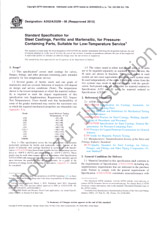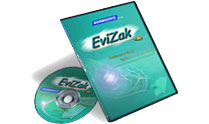Wir benötigen Ihre Einwilligung zur Verwendung der einzelnen Daten, damit Sie unter anderem Informationen zu Ihren Interessen einsehen können. Klicken Sie auf "OK", um Ihre Zustimmung zu erteilen.
ASTM E3199-22
Standard Guide for Alternative Allocation Approaches to Modeling Input and Output Flows of Secondary Materials and Related Recycling Scenarios in Life Cycle Assessment
Name übersetzen
NORM herausgegeben am 1.5.2022
Informationen über die Norm:
Bezeichnung normen: ASTM E3199-22
Anmerkung: UNGÜLTIG
Ausgabedatum normen: 1.5.2022
SKU: NS-1066086
Zahl der Seiten: 14
Gewicht ca.: 42 g (0.09 Pfund)
Land: Amerikanische technische Norm
Kategorie: Technische Normen ASTM
Die Annotation des Normtextes ASTM E3199-22 :
Keywords:
50/50 (hybrid), allocation, cutoff approach, end-of-life, environmental impacts, life cycle assessment (LCA), recycled, recycled content, recycling, sustainability,, ICS Number Code 13.020.60 (Product life-cycles),13.030.50 (Recycling)
Ergänzende Informationen
| Significance and Use | ||||||||||||||||
|
4.1?LCAs can help to identify some of the potential environmental impacts of products or services throughout the entire life cycle. In a life cycle inventory analysis, emissions into the air; discharges into the water and soil; and product, material, and energy flows at all stages of a products life cycle are compiled and quantified. The resulting life cycle impact assessment (LCIA) converts the quantified parameters into environmental impact categories. 4.2?Options for managing products at their end of life (EOL) can include, but are not limited to, re-using, recycling, recovering, remanufacturing, converting to energy, incinerating, composting, combustion, digestion/respiration, or discarding as waste. Materials enter subsequent life cycle(s), either in the same or in other applications, reducing the input of primary raw material and impacting the amount of waste. LCA will be required to determine if environmental impact reductions are expected to be realized and to what extent for each specific application. The end-of-life management can impact the overall life cycle assessment. 4.3?The application of an allocation method for recycling in life cycle assessments is useful in assessing potential environmental impacts, which may be either beneficial or adverse. 4.4?As part of good LCA practice, practitioners should consider recycling in the sensitivity analysis. 4.5?LCA practitioners are expected to ensure consistency and conformance with the relevant provisions of ISO standards. 4.6?Allocation for recycling can split the flows and impacts between two different product systems. |
||||||||||||||||
| 1. Scope | ||||||||||||||||
|
1.1?This guide illustrates alternative allocation approaches that provide options for modeling secondary material flows and related recycling scenarios within a life cycle assessment (LCA) study. It helps practitioners characterize and understand materials recycling across industries; provides the available methodologies for consideration of the environmental impacts that are attributed to material and product flows in LCA; aids in assessment of the overall life cycle of systems and understanding of materials; and supports life cycle management. 1.2?The guide is not intended to contradict or circumvent the LCA provisions of ISO 14025, ISO 14040, ISO 14044, ISO 14067, ISO/TR 14049, or ISO 21930. When conflicts arise related to LCA, the guidance of those ISO standards takes precedence. 1.3?The following seven material-specific appendixes are included:
1.4?The values stated in SI units are to be regarded as standard. The values given in parentheses after SI units are provided for information only and are not considered standard. 1.5?This standard does not purport to address all of the safety concerns, if any, associated with its use. It is the responsibility of the user of this standard to establish appropriate safety, health, and environmental practices and determine the applicability of regulatory limitations prior to use. 1.6?This international standard was developed in accordance with internationally recognized principles on standardization established in the Decision on Principles for the Development of International Standards, Guides and Recommendations issued by the World Trade Organization Technical Barriers to Trade (TBT) Committee. |
||||||||||||||||
Empfehlungen:
EEviZak – alle Gesetze einschließlich ihrer Evidenz in einer Stelle
Bereitstellung von aktuellen Informationen über legislative Vorschriften in der Sammlung der Gesetze bis zum Jahr 1945.
Aktualisierung 2x pro Monat!
Brauchen Sie mehr Informationen? Sehen Sie sich diese Seite an.




 Cookies
Cookies
